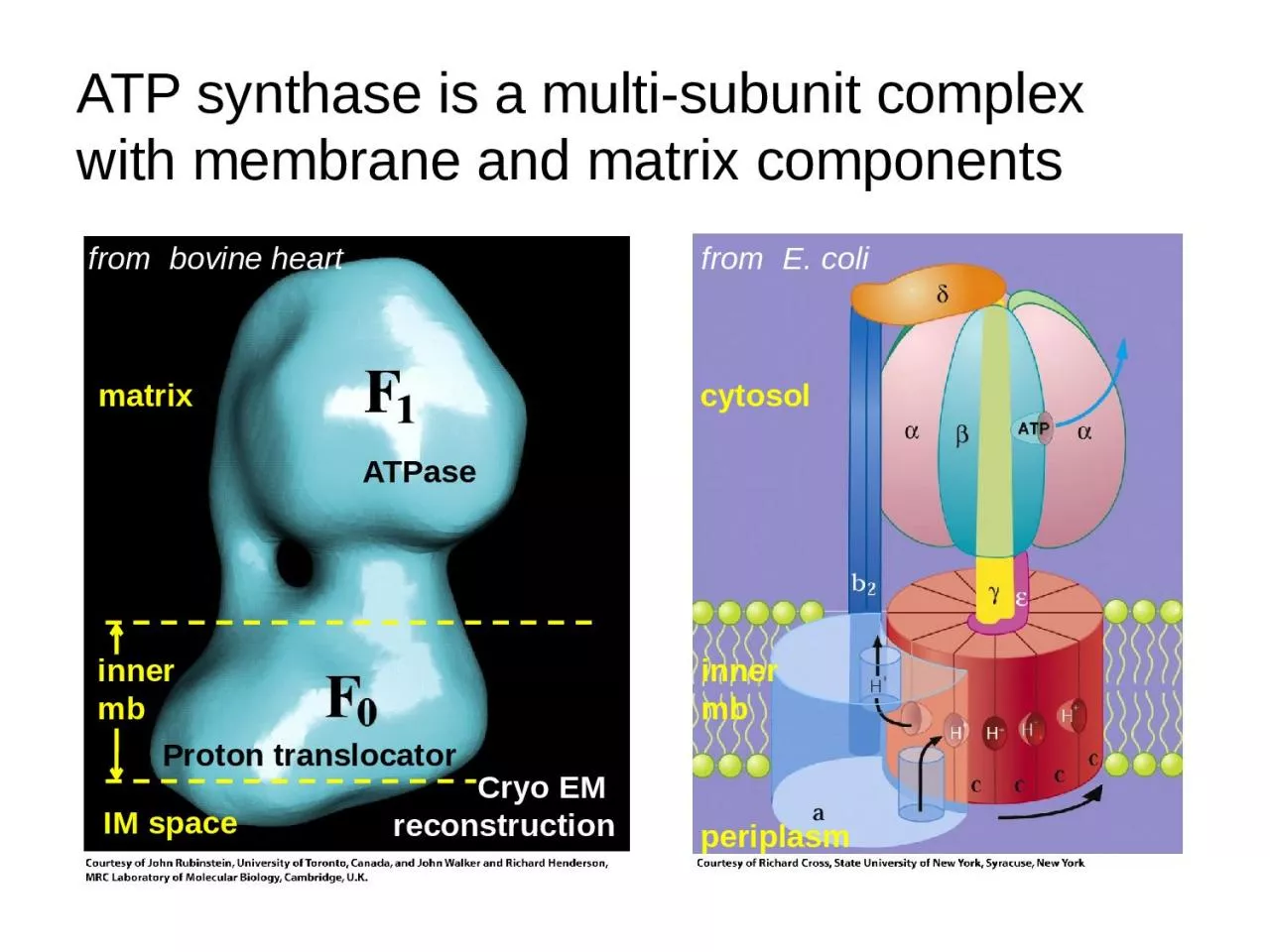

Cryo EM reconstruction from bovine heart from E coli matrix inner mb cytosol inner mb Proton translocator ATPase periplasm IM space ATP synthesis happens in the F1 complex Unlike most enzymes product release is the ratedetermining step for ATP synthase ID: 1038414
Download Presentation The PPT/PDF document "ATP synthase is a multi-subunit complex ..." is the property of its rightful owner. Permission is granted to download and print the materials on this web site for personal, non-commercial use only, and to display it on your personal computer provided you do not modify the materials and that you retain all copyright notices contained in the materials. By downloading content from our website, you accept the terms of this agreement.
1. ATP synthase is a multi-subunit complex with membrane and matrix componentsCryo EM reconstructionfrom bovine heartfrom E. colimatrixinnermbcytosolinnermbProton translocatorATPaseperiplasmIM space
2. ATP synthesis happens in the F1 complex
3. Unlike most enzymes, product release is the rate-determining step for ATP synthase
4. Figure 18-24The “binding change” mechanism explains how rotational motion drives ATP synthesisRotation of the γ subunit induces sequential conformational changes in the α and β subunits. The conformations promote:1. ADP and Pi binding (Loose or ADP conformation)2. ATP formation (Tight or ATP conformation)3. ATP release (Open or empty conformation)
5. Proton movement across the membrane spins the rotor and drives ATP synthesisRotor: Ring of c subunits plus γ and ε(The rotor rotates.)Stator: α/β ring plus a, b2 and δ(The stator is stationary.)Binding and release of 3 protons turns the rotor 120, resulting in the synthesis of one ATP
6. Pi + H+Transporters allow substrates and products of ATP synthesis to cross the inner mitochondrial membraneCytoplasmMatrix++++++++++++-----------The electrochemical gradient provides the driving force for this transmembrane movement